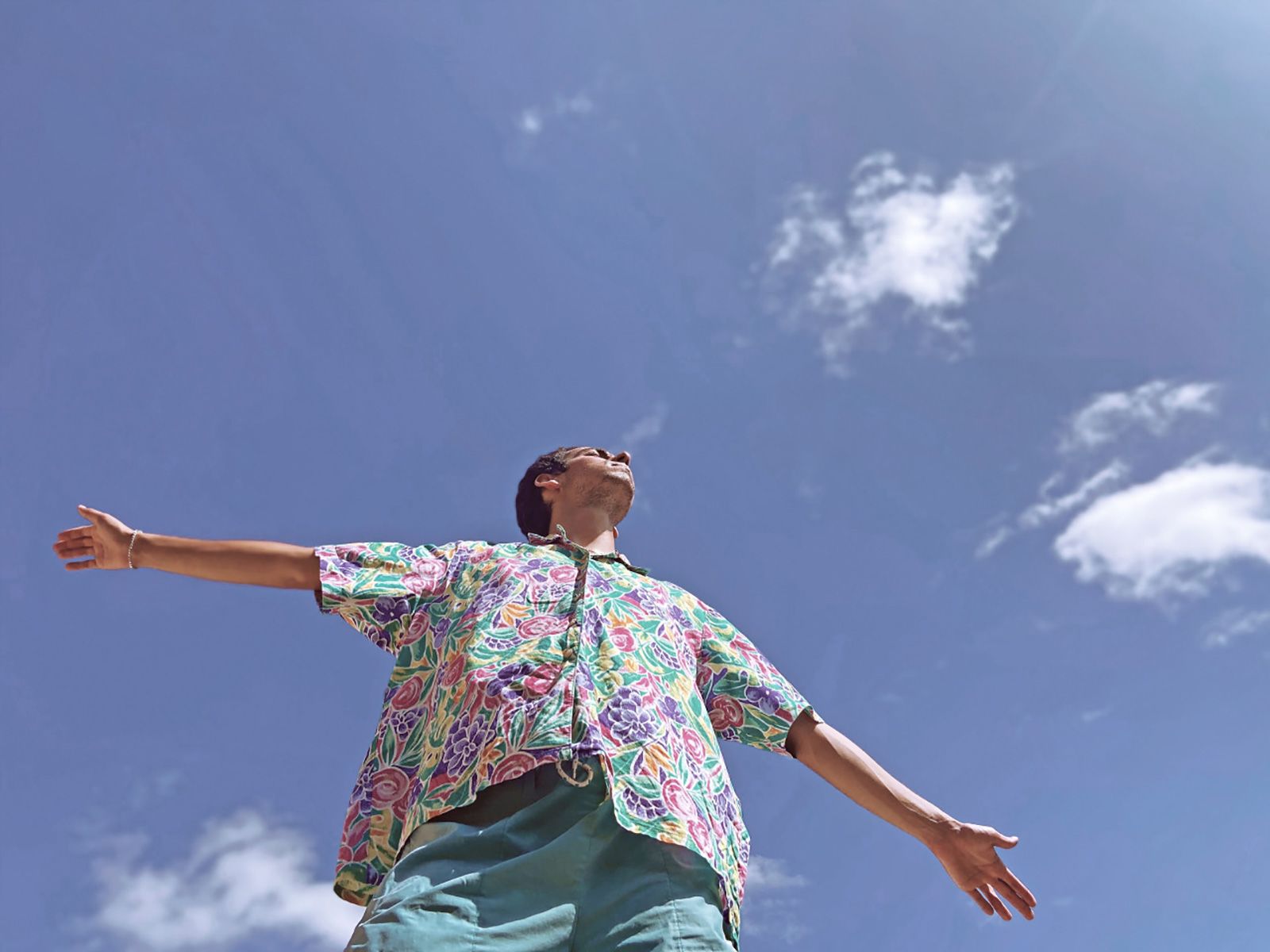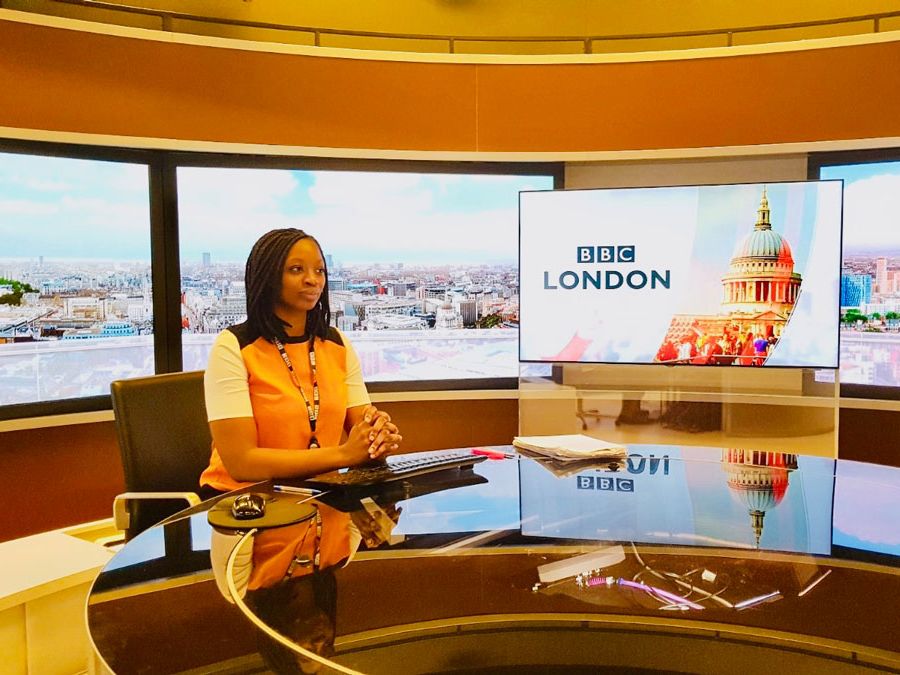
MA Media, Communications and Critical Practice graduate featured on WIRED Japan
- Written byChloe Murphy
- Published date 28 June 2021
The global pandemic has made a profound impact on the personal, the public and the political. In addition to affecting the ways in which we work, live and connect with each other, Covid-19 has also catalysed conversations across wider society, resulting in huge shifts in both public opinion and behaviours.
One of the most prominent contemporary issues highlighted by the pandemic involves the proliferation of information. As audiences gain access to more channels and forms of media than ever before, the sheer volume of content disseminated by a range of conflicting sources has resulted in an ‘infodemic’, where unverified conjecture can be easily communicated and shared as fact.
Recent MA Media, Communications and Critical Practice graduate at London College of Communication (LCC), Akihico Mori, is a science journalist and media researcher based in Kyoto. With an interest in the ‘collision’ between emerging technology and humanity, he chose to develop his Master’s dissertation in response to the issues of the current climate, asking: ‘What opportunities and challenges does the Covid-19 infodemic pose to science journalism?’
Undertaking interviews with writers from a range of international publications, Akihico’s work considers how science journalists around the world have been able to convey ‘the language of science’ while resisting the spread of ‘uncertain information’ around coronavirus. Awarded a distinction, his dissertation was later recognised by WIRED Japan, where it was published as the first feature in a series that examines emerging journalistic attitudes and issues in the current media environment.
For almost 3 decades, WIRED has explored the ways in which emerging technologies affect culture, politics and the economy. First established in the United States, it now has satellite publications in the UK, Italy, Germany and Japan, which highlight a range of domestic voices and developments which bring further insight and nuance to the field.
We chatted to Akihico about the evolving landscape of science journalism, negotiating the nuances of global and domestic readership, and his experience of ‘travelling the world without moving’ by developing a dissertation during the pandemic.

How did you first become interested in the field of Media Studies, and why did you decide to study it further at MA level?
As a science journalist, I was interested in undertaking a media studies course at UAL where experimental media creation was taking place in the centre of a vibrant city: London.
Science journalism is expected to contribute to society by making scientific information citizens' knowledge; however, science stories are largely considered a bit dry and hard to understand. I believe that social awareness of science stories should be challenged in experimental ways, particularly by creative approaches. The fact that LCC's MA Media, Communications and Critical Practice course consists of both a theoretical approach to media studies and also creative practice seemed an ideal choice for me.
Additionally, I wondered if I could study media communications and work in my field outside of Japan. I've worked as a science journalist for more than 10 years in Tokyo, and my articles have mainly appeared in the Japanese edition of WIRED. To work with a branch of the world’s renowned science and technology journalism means that, inevitably, my interests aren't limited to Japan, so I decided to study in London to achieve a new perspective on my career.
Are there any particular subjects or themes that you're interested in exploring through your work?
My main interest involves social critiques around the interaction between emerging science/technology and humanity. Therefore, my articles concern this 'collision' through topics such as the world's first ‘cyborg’ competition, the CYBATHLON of ETH Zurich in Switzerland (2016).
Competition entrants are people with physical disabilities who have been equipped with state-of-the-art assistive technology such as brain-machine interfaces and powered-arm prosthesis. They compete with each other to foster research and aid development of technology and ethics. Previously, I have been able to report on the related experimental challenges around blurring the existing boundary of natural and artificial bodies.
What inspired your dissertation topic, and why did you think it was an important area to focus on?
Cynically speaking, the pandemic gave me inspiration to explore my dissertation theme: Science Journalism in the Infodemic related to COVID-19 Pandemic in 2020, its Challenges and Evolution.
The newness of my dissertation is to evaluate journalistic activity in the ‘infodemic’ based on the concept of Mediatisation. A ‘hack’ of this project is that it isn’t really a study of science journalism; instead, by taking a practical view of science journalists as social actors, I tried to explore the theoretical rationale for the world being 'mediatised'.
I was curious to see the infodemic as a historically distinctive media state in order to understand our current mediascape. It's filled with social problems such as:
- the diffusion of fake news
- societal division relating to filter bubbles
- the imbalanced situation of the Global South relating to data capitalism
- the asymmetrical technological structure between the journalistic media industries and technology companies (for example, social media platforms).
If you’re inside the infodemic, all you see is chaos. But if you have an eye that’s able to see it from a more distant angle, you’ll understand that it is, in fact, a distinctive state of media in which potential social problems can be observed.

Tell us a little bit about your creative process - how did you develop your dissertation from idea to final submission?
Firstly, I set up my research question as: “What opportunities and challenges does the COVID-19 infodemic pose to science journalism?”.
Secondly, in order to answer the question, I used Mediatisation as a key concept to explain the infodemic from a theoretical perspective. This theory claims that current media exerts a dominant influence on social state and culture processes; in other words, today’s media shapes our society.
Theory is powerful like a giant. It gives you the ability to see the world from its shoulders when you climb up by reading papers; however, the sight will not be yours unless you let the giants move.
Thirdly, to examine Mediatisation theory practically, I conducted qualitative interviews with professional science journalists who had experience in working for the BBC (UK), WIRED (US), Nature, The New York Times, MIT Technology Review, Scientific American, Neue Zürcher Zeitung, and ZEIT Online. I also spoke to writers from an independent publication named Delayed Gratification, as well as other journalistic media.
Finally, from the result and analysis of my interview research, I found 2 types of approaches to combat the propagation of misinformation, with the cost and risk for anti-misinformation actions identified as key challenges. Then, I used evidence to determine the emerging knowledge needed to improve science journalism by describing the updated role of a science journalist.
My dissertation successfully suggests that the future of journalism as a whole is, in fact, a ‘double geared’ journalism which consists of coexisting fast and slow approaches. Additionally, it also recommends that the problematic technological asymmetry between the journalistic media industries and technology companies such as social media platforms needs to be discussed radically.
How did your dissertation come to the attention of WIRED?
I create my jobs, gain new skills and networks, and moreover, spend all my life pitching ideas. All I did was pitch my dissertation to the editor-in-chief.
I always thought that my dissertation should not only be able to contribute to the academic community, but also to the community of science journalism that I belong to.
Why is being published on WIRED Japan such an important opportunity for you?
Introducing ideas by science journalists who work for global media outlets to Japanese readers is valuable because Japanese journalistic media often tends to be domestic.
Moreover, I found an interesting collaboration with a UAL graduate for my articles. I found it difficult to source images related to my work because my dissertation consists of online interviews without any footage, so I decided to collaborate with an illustrator. I worked with Dana Hong, who is based in Seoul and studied MA Graphic Communication Design at Central Saint Martins. I hadn't met her before, but I was introduced to her work through the UAL website.
She spent her school years in London, and A Secure Place is her depiction of the depressing feelings of a cold London winter when she tended to stay indoors. The illustration, in which she appears to be fed up with screens, was painted before the pandemic, but curiously coincides with the ‘Stay Home’ order during lockdown. In addition, television is also a common motif in media art, and is often found in the work of creatives such as Nam June Paik.
Dana's illustrations give my articles humanistic feelings. Without her kind collaboration, I don’t think that the series would have attracted as many readers.

What are your future plans and career goals?
Providing science stories for global media such as the BBC is a milestone for me to achieve this year.
When I was interviewing science journalists who write for the likes of the BBC, WIRED and Nature, the one thing they all said was that they wanted me to report on the cutting-edge of science in Japan. While the Japanese media provides valuable information, their influence is often limited by language and confined to the country. This is what I would like to address as a science journalist. I'd also like to continue collaborating with my friends from UAL, like in the case of Dana.
I’m connecting dots to create distinctive work in the future by keeping my theme, using my own tools from my MA, and staying critical.
What were the highlights from your time as a student at LCC?
Ironically, the highlight was working on my dissertation throughout the pandemic.
At the end of November 2020, after several pivots of my dissertation proposal (and with my score on the proposal getting low), I was working on a strange task at home on my laptop. My home was in Kyoto because me, my wife and 3 year-old daughter had already left London in March - the middle of my academic year.
I was listing the names of science journalists and authors appearing in articles relating to Covid-19 across global news media such as The New York Times, the Guardian, the BBC and the US edition of WIRED. I then sent them an invitation email requesting an interview. Of course, I didn't know any of these journalists. I had no contacts. I didn't even have their exact email addresses.
I just read their articles, guessed the email address of the journalist I wanted to talk to by simply putting "@xxxxx.com" or "@xxxxx.co.uk" after their name, and kept sending emails. My mailbox was quickly overflowing with: "Mail delivery failed." (I also used LinkedIn and other social media, but stopped because the more famous journalists were, the more I'd have had to upgrade my plan!)
Although a spam-like contact, my request was quite serious: "I’d like to investigate the activities of science journalists around the world during the pandemic. I'd like you to help me with an interview.”
The replies from the busy science journalists were always short. “Sorry, I’m slammed" was the most common reply, followed by: "Good luck". My mailbox was filled with sad responses, but many of the journalists on the list kindly replied - even if they were TED speakers.
I'll never forget when Richard Fisher, science journalist and editor at the BBC, emailed back with: "I'd love to talk to you.”
In Kyoto, far from London, I travelled the world without moving. Many thanks to Richard, as well as Roxanne Khamsi from WIRED US (Canada), Marcus Webb from Delayed Gratification (UK), author Martin W. Angler (Italy), author Minako Takizawa (JP) and Takeshi Shimizu from BBC (UK).
What are your top tips for anyone who may be interested in applying to MA Media Communications and Critical Practice?
Bring your own theme to LCC. The College is filled with opportunities to acquire new ideas and perspectives that can reshape your existing understanding; however, if you don’t have a specific theme to fill, these ideas cannot be stored inside you.
Find your own tool for thinking. MA Media, Communications and Critical Practice is designed to help you find your own anatomy of representation. Everything is simultaneously signified and signifier. Particularly in the digital age that we all belong to, everything that happens is ‘unfriendly’ to us unless we can successfully decode it.
Stay critical. If you follow what the majority says, you won’t form a distinctive identity. If you make a difference and follow your own way, the world will show you another side unknown to you.
These things are what I hardly achieved in my academic year in London. Time flies so fast, and London is such a diverse and vibrant city to keep up with. Good luck!
Related links:
- Explore Akihico's work on his website and follow him on Twitter: @AkihicoMori
- Learn more about WIRED Japan.
- Find out more about MA Media, Communications and Critical Practice at LCC.



